As I have stated numerous times previously, martial arts stories are seldom real history, with one of their most important defects being a failure to recognize the intersection of the martial arts world with the “real world.” I’ve seen countless martial arts stories that patently ignore well established facts and realities. Worse yet, many students reading these stories never appreciate how the agendas and complexities of that “real world” have effected the accounts they read. Today’s blog post is about these “hidden histories.”
Jigoro Kano (1860 – 1938) was not simply the founder of Judo, he fundamentally changed the martial arts world with his concepts of randori (乱取り) and shiai (試合). Today, many appreciate his contribution to modern Brazilian Jiu-Jitsu. An educated few appreciate his contribution to Russian Sambo. Most are ignorant of, or consciously try to deny, his link to modern Sanshou / San Da. The entire history of Kano, Judo, randori, and shiai is obscured by the influences of the “real world.”
For decades now, histories (if we can really call them that) of Judo have often failed to cite the role of Japanese militarism, World War II, and the post war occupation of Japan upon Judo’s development. Kano was actually an opponent of Japan’s militarism and resisted attempts to turn his Kodokan into a military academy. Some believe that Kano was actually poisoned by the Japanese government to remove him as an obstacle to inclusion of the Kodokan as a military academy. Keeping this in mind, in the post war occupation period, the Kodokan not only had to quickly distance themselves from their ties to Japanese militarism, they also had to reform their image as physical education and sport rather than fighting art in order to secure permission to re open their doors. Thus, discussions of randori and shiai as COMBAT TRAINING METHODS remained largely obscured in post-war Kodokan writings.
Judo’s original format stressed throws designed to either knock out an opponent or injure them enough to make them submit. When that was not sufficient, ground work (newaza) would result in either a choke or joint attack that would make the opponent submit (or go unconscious). This is to say, Judo was not a “sport”, it was a COMBAT METHOD.
Nothing demonstrates this fact better than an 1886 challenge match between Kano’s Kodokan Judo and the so called “deadly” traditional Jujitsu Ryu organized by the Tokyo Police. The Tokyo Police were interested only in one thing, what was effective. The 1886 matches have been either obscured or ignored by most mainstream accounts for obvious reasons. They were “no rules” matches designed to prove which art was the most effective COMBAT METHOD. The Kodokan won 13 of the 15 matches (two being labelled “draws”?). Even more obscured, to further the Kodokan’s re-branding of itself as physical education and sport, is the fact that some of the traditional Jujitsu Ryu participants subsequently died from injuries they received from being thrown!
Our history now shifts focus to the former Soviet Union and the martial art of Sambo. A man named Vasili Oshchepkov was certainly one of the founding fathers of this martial art, if not THE major influence. Living on the eastern fringes of the Russian empire, in land of disputed ownership, Oshchepkov was admitted to the Kodokan at age 19, the first Russian and only the fourth European in history to receive a black belt ranking in Judo from Kano. Oshchepkov was exposed to how randori and shiai took traditional methods and made them alive and practical, and applied the same principles to native, ethnic Russian styles of fighting.
If you are unfamiliar with Vasili Oshchepkov, or Kodokan Judo’s relationship to Russian Sambo, it is due the very real world political realities that were at play in the former Soviet Union. Oscchepkov was accused of being a Japanese spy and placed in prison during political purges in the 1930’s. Once again, to ignore that traditions exist within the context of the real world, that martial artists are just as effected by the history and politics around them, is to fail to properly understand many things.
Other real world influences upon so called martial arts histories are nationalism and xenophobia. There is no place this is more true than China. Chinese martial arts stories frequently obscure or flatly deny any foreign influences, whether those influences are western boxing, Japanese Judo or Russian martial arts. Of course, you can deny all you want, but facts will always remain.
I’ve encountered many revisionists who have attempted to refute the following, but please see if you follow me. Let us begin with established historical fact. In January 1923 Dr. Sun Yat-Sen, leader of the Guomindang (Nationalist party) signed an agreement with the Soviet Union. The Russians promised Sun not only arms, but advisers as well.
“Since we wish to learn their (the Soviet Union’s) methods, I have asked (Soviet advisor) Mr. (Michael) Borodin to be director of training of our Party.”
Michael Borodin led a contingent of Soviet advisers to Guangzhou, where Sun had established a local government. Under Borodin’s tutelage, the Guomindang embraced Soviet principles of party organization and of party discipline and learned methods of mass organization, propaganda and infiltration. In 1924, the Whampoa Military Academy was established with Soviet assistance in order to train the party’s leadership cadre and create a modern military force. Soviet style political science classes were instituted (taught by Zhou Enlai) and the Peasant Training Institute, where the young Mao Zedong served, was created.
Whampoa included in it’s curriculum close quarters combat (CQC) training for its military cadets. This trained was influenced by the current Soviet methods of CQC, i.e. Sambo. Of course, Sambo had been influenced by Oshchepkov’s Judo training; concepts of randori and shiai. These were the beginnings of Sanshou / San Da. Yet many revisionists remain who want to deny this.
Once again, the historical record is very clear. Every single aspect of both the Guomindang party and the Whampoa Academy was subject to Soviet influence; the party organization, the party discipline, the political indoctrination, mass organization methods, Soviet style infiltration and sabotage methods, political science courses, etc etc etc. I’ve confronted these revisionists with this, they don’t (because they can not) deny it. Their response? Every single aspect of the Guomindang and Whampoa during this period was under Soviet influence EXCEPT the martial arts training! I will leave the reader to ponder this claim.

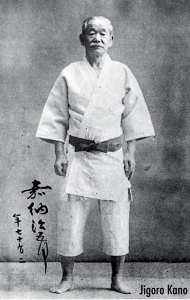
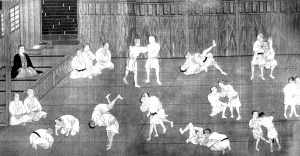

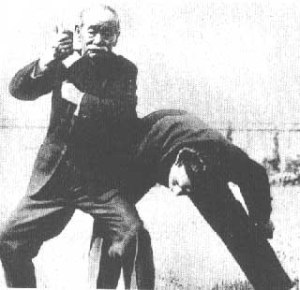
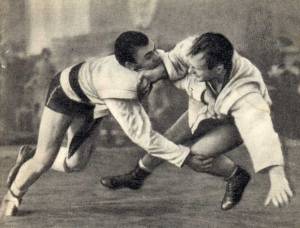
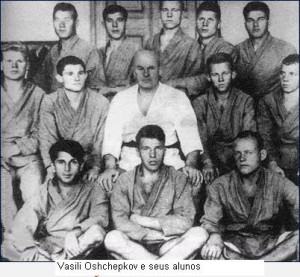
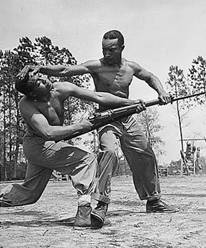
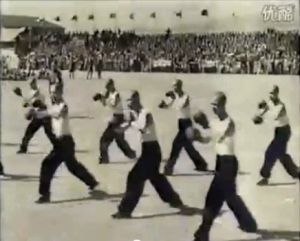
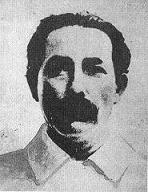
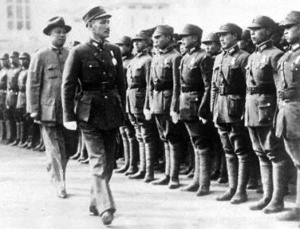
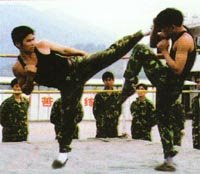
Thanks for sharing that David.
Dear David,
so great blog entry, it is great food for the brain. Just one question: do you know about any reference about the fatal destiny of the Ju jutsu participants? I find it quite likely to be true, but if somebody asks me about it, I would like to cite the source of the idea.
Thanks a lot
Okay, I’ll bite.
I will start by saying, I love it. The history is so fastening to me, and I am one of those who believe that the world is far more intermixed then many like to claim. This is very very true with the martial arts, as we don’t develop skills in a vacuum.
So what are we saying here? That Sanshou/ Sanda was influenced by Sambo, which was influenced by Judo? I ask because I am curious about these connections. I am ignorant about the history so my only source right now is Wiki, so please correct me and point me in the right direction.
Here’s where I got lost. How did Sambo develop and influence training at the Whampoa Military Academy if Oshchepkov and Spiridonov developed Sambo teaching during that same time? Or am I missing a piece?
Again my Wiki research is most likely lacking, but Oshchepkov started working with the Red Army training techniques in 1923 though no month was given. I can imagine that the system was refined in the 6 months to a year it took between then and the Whampoa Military Academy starting holding classes. Just a curiosity and if there is a good source showing this connection I would love to dig deeper. Any resources on the martial training held at the Academy, and how they might have differed from earlier Chinese training at facilities like the Jingwu? This would make a fascinating comparison.
Asking questions is how I learn 😀
Reblogged this on Taekwondo Fighter and commented:
So good I HAD to reblog! Judo is an incredible martial art, and it’s out of Judo several more incredible martial arts have been born.